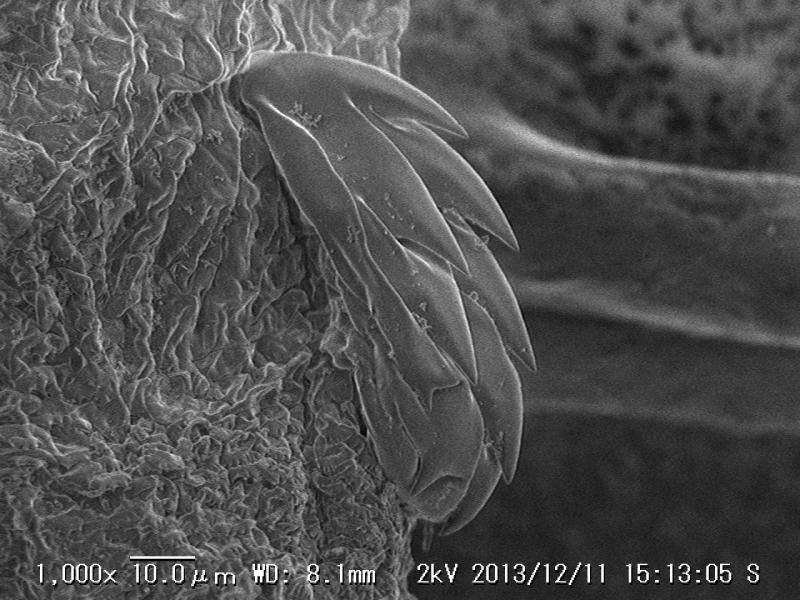How harmful male genitalia can impact reproduction in other species

Male Callosobruchus chinensis seed beetles have spines on their genitalia, which increase their fertilization success but injure a female's reproductive tract—especially a female of a related species called Callosobruchus maculatus.
New research indicates that such harmful male genitalia can diminish the reproductive success of competing species and may play an important role in interspecies competition, with considerable demographic and evolutionary consequences.
"Harmful male genitalia and consequent fitness loss in heterospecific females may be one of the mechanisms by which closely related species pairs are often prevented from local coexistence," said Dr. Daisuke Kyogok, lead author of the Journal of Evolutionary Biology study.
More information: Kyogoku, D. and Sota, T. (2015), Exaggerated male genitalia intensify interspecific reproductive interference by damaging heterospecific female genitalia. Journal of Evolutionary Biology. DOI: 10.1111/jeb.12646
Journal information: Journal of Evolutionary Biology
Provided by Wiley





















